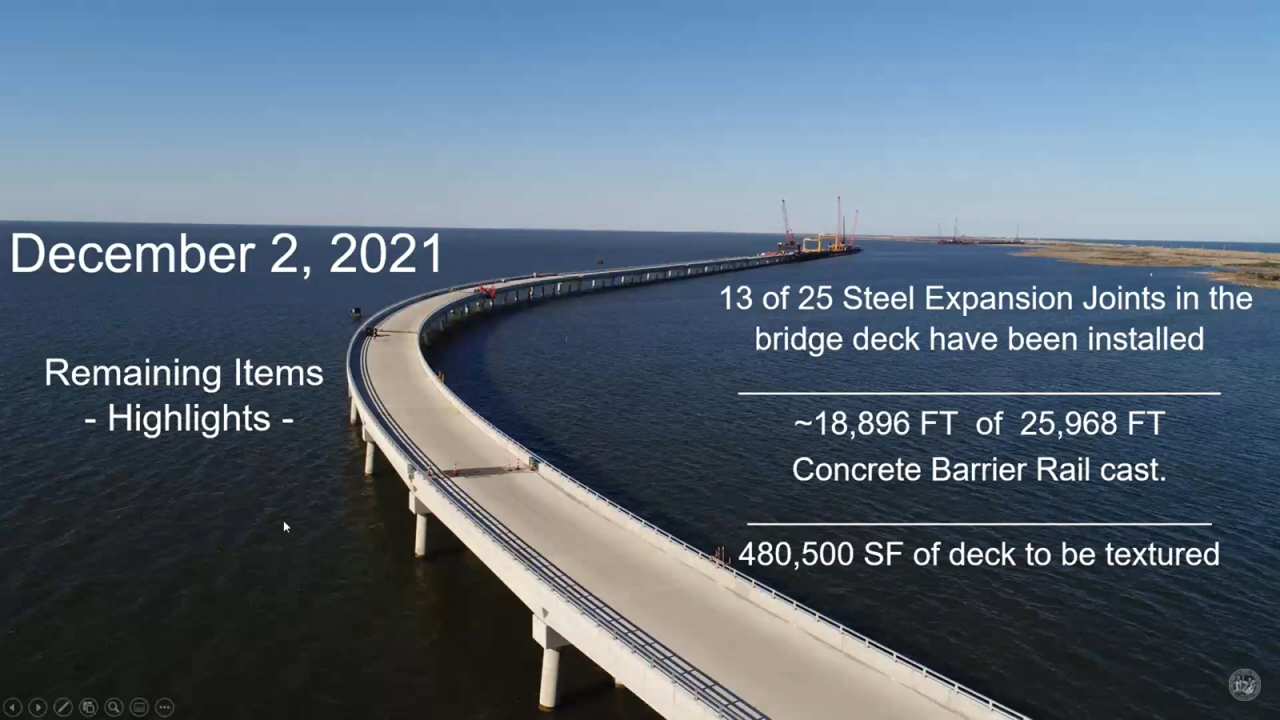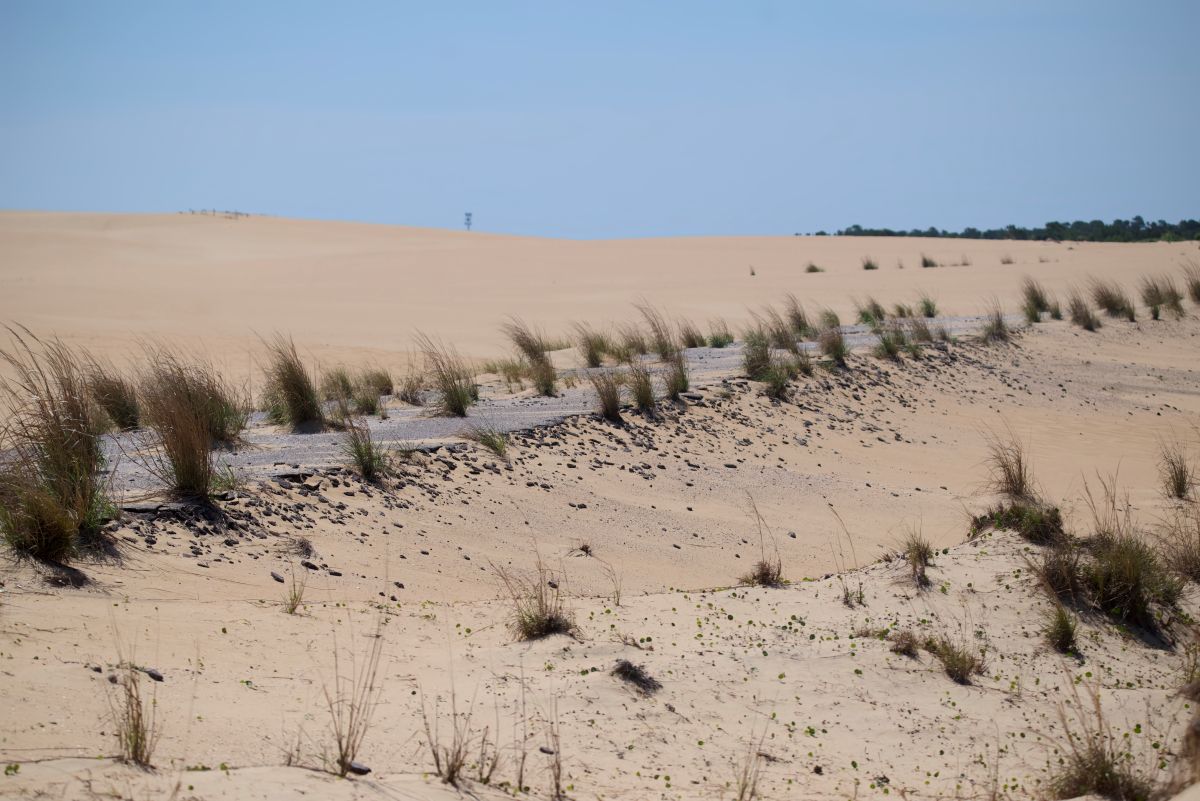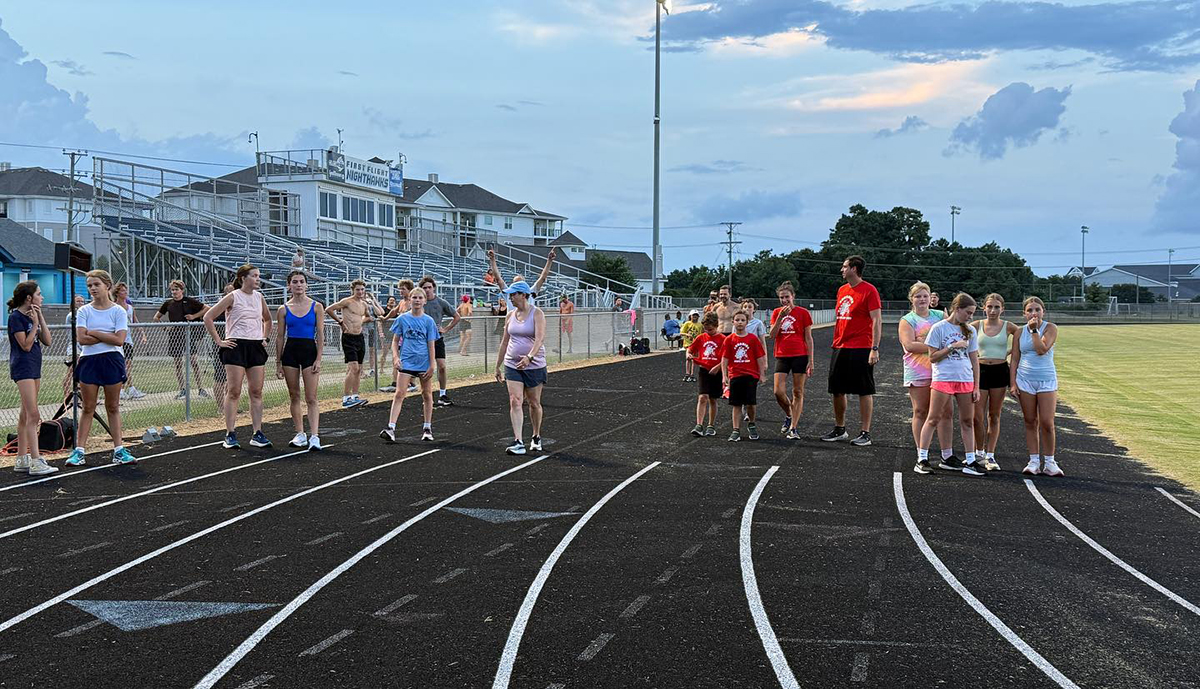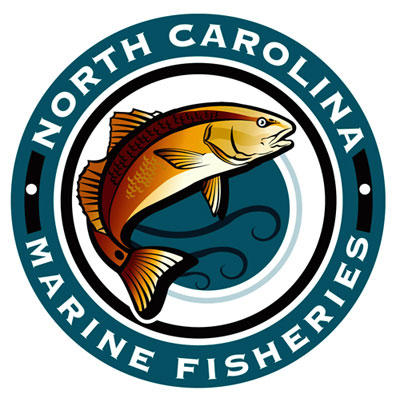
Reprinted from Island Free Press
With 95% of the Rodanthe “jug handle” bridge project finished as of late last week, the bridge is expected to be complete by early 2022, according to an update from the North Carolina Department of Transportation’s resident engineer for the project, Pablo Hernandez.
Supporter Spotlight
Hernandez explained during a virtual update Thursday that if the weather holds, the bridge could be open in February, but if not, a March opening would be more likely.
Once the bridge is open to traffic, the speed limit will be 55 mph but reduce to 45 mph at the curve on the southern end of the structure, and reduce again to 35 mph before traffic enters the new roundabout. The bridge was designed to have a 100-year lifespan.
Hernandez said the 100-year design life that doesn’t mean NCDOT won’t have to do any work in the next 100 years,” but with appropriate management and maintenance activities, we should get 100 years out of this structure.”
Southbound traffic was shifted onto the completed portion of the roundabout Nov. 19. Hernandez said the traffic shift allowed NCDOT to complete work on the east side of the roundabout.
All major elements of building the bridge are complete. The 352 pilings have been installed, all 388 concrete girders have been set and the 107 deck spans have been cast.
Supporter Spotlight
NCDOT crews and subcontractors were recently installing the concrete barrier rail and are to begin texturing 480,500 square feet of the deck space in January. All work will likely be done at night, as other tasks are performed.
Casting of the remaining concrete barrier rails was to begin Monday, with the goal to complete this part of the project by Christmas. This in turn will allow 14,000 linear feet of the two-bar metal railing to be installed on the concrete barrier rail to create a bicycle-safe environment along the bridge.
The Cape Hatteras Electric Cooperative and NCDOT were to begin Monday installing the hanger system and conduit under the bridge for electrical power and fiber optic utilities.
NCDOT was also working on installing steel expansion joints in the bridge. Once installed, a 2-inch-wide cap will be sealed with a rubber membrane to allow for the future expansion and contraction of the bridge as needed.
Work to remove the existing N.C. 12 pavement and sandbags on Pea Island in the S-turns area is to begin once traffic is shifted to the new bridge.
Hernandez said that NCDOT had submitted a variance request to the Coastal Resource Commission to create a modified cul-de-sac, allowing vehicles to turn around, and to install sandbags and dunes in the immediate area along the Pea Island National Wildlife Refuge’s boundary. The variance request is currently on the commission’s agenda for the February meeting.
Existing sandbags are to be left in the Mirlo Beach area, south of the refuge boundary.
The Rodanthe Bridge is part of phase II of the Bonner Bridge Replacement Project, and is the last of the three new bridges on Hatteras Island to be built. The Capt. Richard Etheridge Bridge on Pea Island was completed in the spring of 2018, and the Bonner Bridge replacement was completed in 2019.
Once complete, the bridge will connect the southern portion of the Pea Island National Wildlife Refuge to northern Rodanthe, bypassing the S-turns section of N.C. 12, which is highly susceptible to breaches and ocean overwash during storms.
This story is provided courtesy of the Island Free Press, a digital newspaper covering Hatteras and Ocracoke islands. Coastal Review is partnering with the Free Press to provide readers with more environmental and lifestyle stories of interest along our coast.








